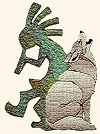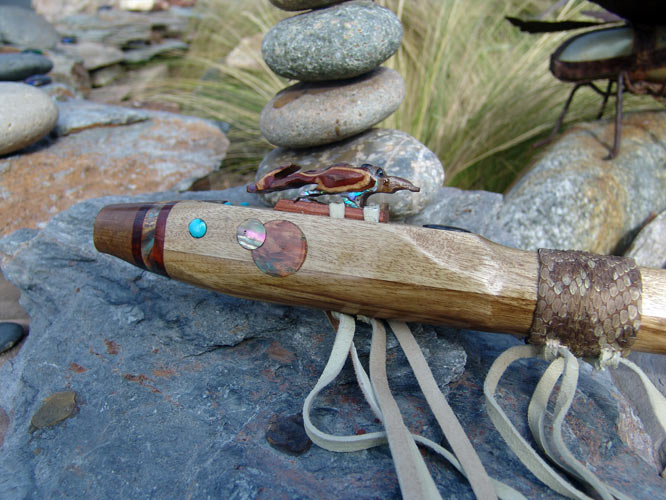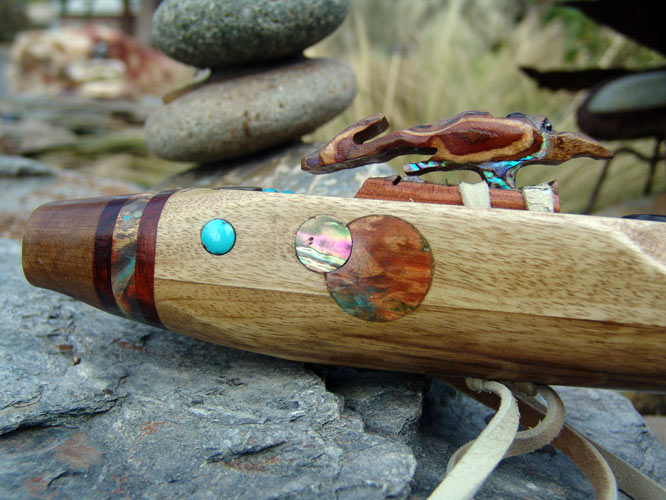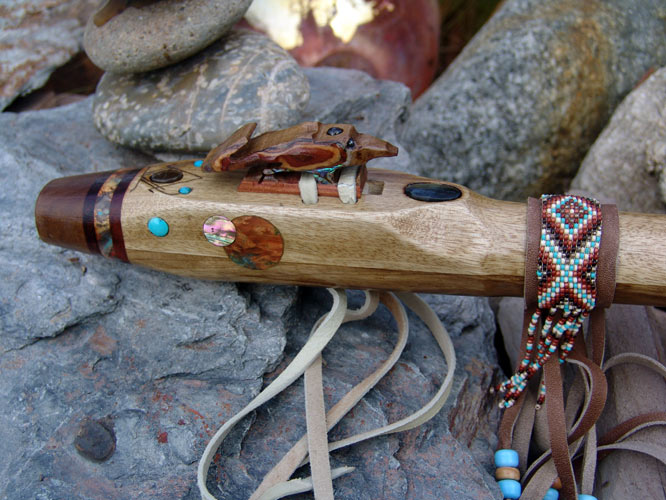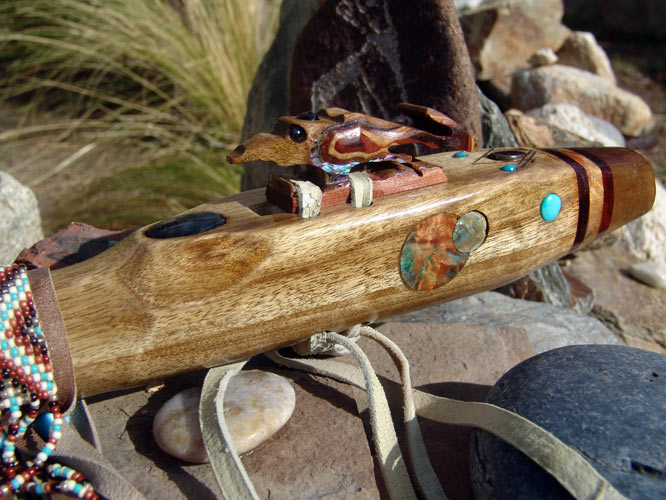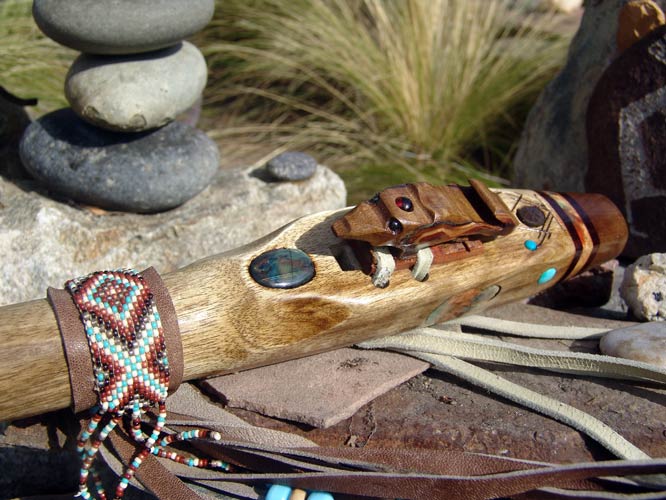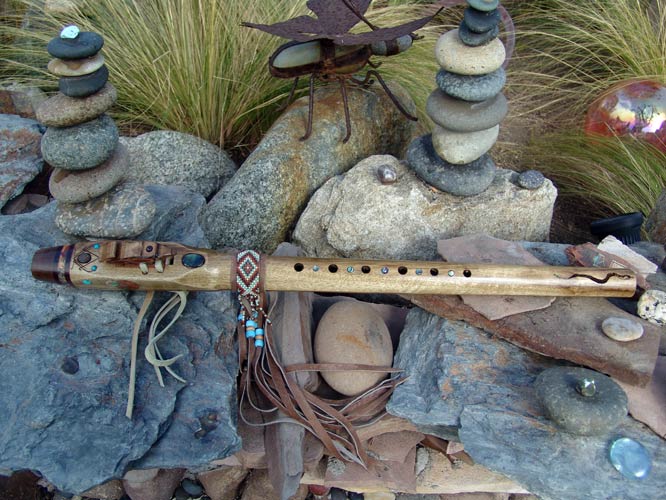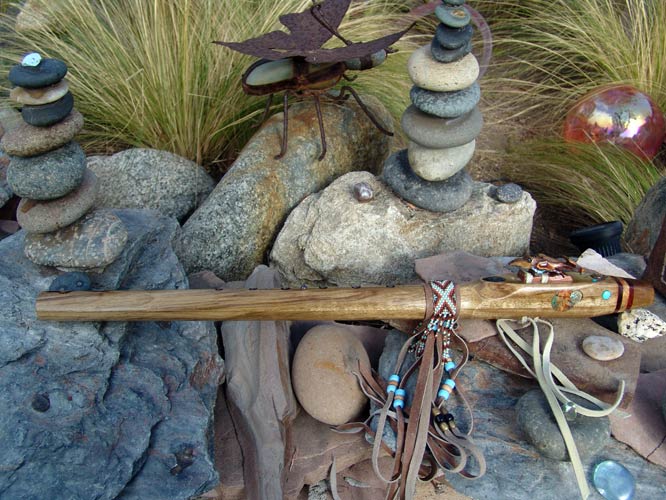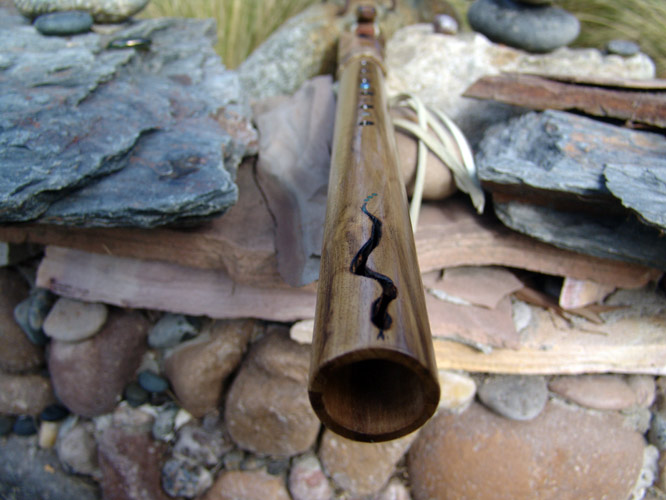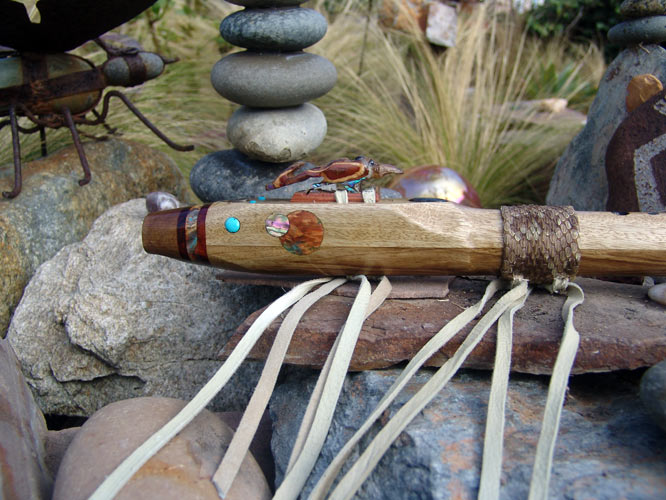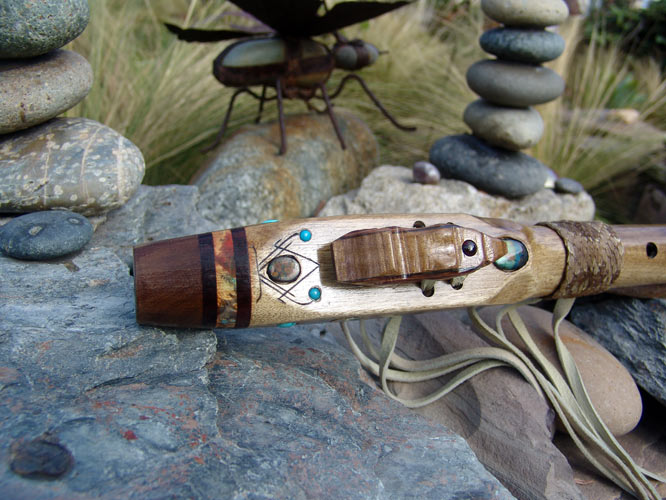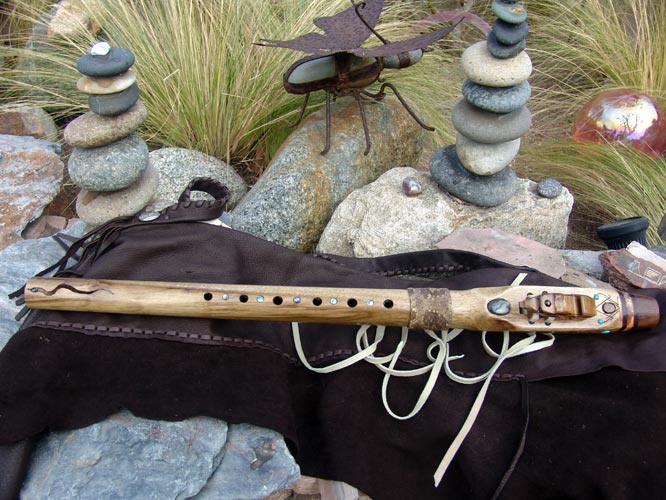$720.00
FREE DOMESTIC SHIPPING
Oregon Myrtle F#m….
SOLD
This was an interesting build, with many levels of construction. Before addressing the components, I want to point out a couple of the stones used for inlay. Specifically, at the mouthpiece, is a 9x12mm “dragon skin” ammolite cab. Ammolite, is the harvested interior shell of a nautilus, or Ammonite of which there were about 50,000 varieties. They ranged from small plankton eaters, to large predators with hard razor sharp beaks. Extremely rare, I typically use “Bear Paw” ammolite, which is 70 million years old….. Back when there was but one continent, Pangea, there was an inland sea extending from the Arctic Circle, to present day New Mexico. Volcanic eruptions along the length of the Rockies, dumped meters thick ash, trapping these little guys in iron rich Bentonitic clay along the Eastern shores of the Rockies. Time, and the resulting soup, created a beautiful iridescence to a few examples…….Occasionally, I will put on my lapidary hat, and try to extract the ammolite, from the ammonite…with little success.
The other stone, directly in front of the fetish block, is known as “Spectrolite”. This 13x20mm oval, is a form of Labradorite, and is found only in the Ylamaa mountain range of Eastern Finland. It is rare, and known as the Finnish ‘Stone of Light’.
The instrument is 22-1/4” long, with a 7/8” bore diameter. I tuned the fundamental up to F#m from beyond F, via a single tuning hole at the foot, stylized as a snake…..Woods used, beginning at the mouthpiece, include twice dyed/stabilized box elder burl, between layers of Laotian flamewood, and capped with the myrtle. Some subtle hand coloring was applied to the box elder as well. The fetish block is cut from myrtle, bonded to a base of Oklahoma red cedar for moisture control. Wing overlay to each side of the bird starts with paua abalone, overlaid with Yew burl, Birdseye maple, Madrone, and Walnut burl.
Inlay, beginning at the mouthpiece, includes the referenced ammolite, flanked by 4mm turquoise dots, while each side of the compression chamber is set with slightly hand colorized 22mm disks of the box elder burl, which is further inset with by 12mm abalone cabs, and trailed by 8mm dome cut cabs of Tibetan turquoise. Forward from the fetish, is the referenced spectrolite, and beyond, are four 5mm abalone dots, at the finger holes, as well as a dome cut 6mm Brazilian azotic topaz. Lastly, the fetish block has a 6mm dome cut almandine garnet set to the bird’s crown, and 2.8mm hematite beads, set as eyes.
The flute was tuned at an ambient temp of 73 degrees F, a wood temp of 74.2 degrees, with 52% humidity, and at 130 ft. above sea level.
A few added notes…….This flute includes a slide off seed bead wrap. I purchased the wrap years ago, and never built a flute with a color tone complementary to the wrap….until now. Additionally, I’ve included a wrap of South Dakota Prairie rattlesnake skin. Tanned here in my shop, this wrap should never accompany the flute to Native American gatherings, as the rattlesnake is very powerful medicine, and can be an unpleasant addition to their festivities. …….Also Included in the purchase, is a beautiful chocolate brown buckskin bag w/ buffalo and Indianhead coin conchos, made by Ann Charles, of Kansa Bags, and retailing for $160.00.
Lastly, the deerskin ties run through the flute and not around it. For drying purposes, it is un-necessary to remove the ties from the instrument. Simply loosening the ties and gently moving the block to the side of the flue area is sufficient. Should you want to completely remove the ties and block, please re-insert the ties with a wooden toothpick so as not to damage the channels bored through the flute.
SOLD
